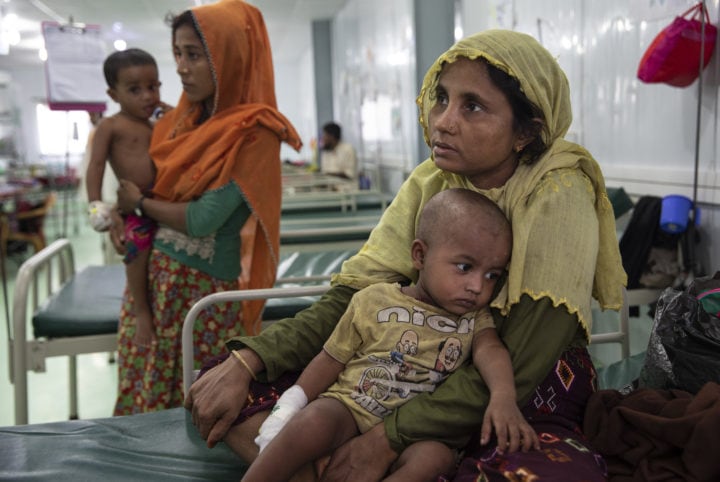
If you are a man identifying as a sexual minority, the postcode in which you live can have a surprising impact on your health, research mapping our attitudes to same-sex marriage reveals.
To reach its goal of eliminating HIV transmission, Australia must improve uptake of testing and HIV treatment among gay and bisexual men, particularly in high-stigma areas.
Greater discrimination and stigmatisation of sexual and gender minorities leads to adverse health outcomes in this community.
Yet, few studies explore how this stigma is associated with sexual health outcomes.
A new study from Monash Business School published in the Journal of Acquired Immune Deficiency Syndromes reveals the extent of this relationship among Australian gay, bisexual and other men who have sex with men – a population disproportionately affected by HIV.
Ms Karinna Saxby, a Research Fellow at the Centre for Health Economics, explains how she and co-authors from the Kirby Institute UNSW, Curtis Chan and Dr Benjamin Bavinton, determined a measure for structural stigma.
“We used the results of the 2017 Australian Marriage Law Postal Survey, to determine the level of social stigma related to sexual minority status. We did this by looking at the responses against legalising same-sex marriage (the ‘no votes’) in different regions,” she says.
Sexual health outcomes are worse in areas with greater opposition to same-sex marriage
The results showed them that HIV and sexual health outcomes among gay, bisexual and other men who have sex with men in Australia are worse in areas where there is greater opposition (as determined by the number of no votes) to same-sex marriage.
They also found that HIV-positive men who have sex with men and who are living in districts most strongly opposed to same-sex marriage were 8 per cent less likely to be on Antiretroviral Therapy (ART) than someone living in the district with the least opposition to same-sex marriage.
“This study is the first to provide empirical evidence that structural stigma is associated with reduced use and awareness of HIV-related healthcare among this group,” Ms Saxby says.
“Altogether, these results suggest that structural stigma may undermine HIV prevention strategies as well as adequate management of HIV infection.”
And where were these areas?
Although more rural parts of Australia generally had a higher share of votes against same-sex marriage, some of the highest percentage of votes against same-sex marriage were found in metropolitan areas—for example, the nation’s highest percentage of votes against same-sex marriage (55.4 per cent) was found in Greater Sydney.
Regular testing is essential
These groups are disproportionately affected by HIV and account for the majority of new HIV diagnoses in Australia.
Regular testing for HIV and sexually transmitted infections (STIs) are integral to effective HIV prevention.
As Ms Saxby explains, without a diagnosis, HIV and STIs can be unknowingly transmitted, and STIs can increase HIV transmission in some circumstances.
“Prevention strategies are becoming increasingly important given recent increases in the proportion of new HIV diagnoses attributable to those in this group who are undiagnosed in Australia,” Ms Saxby says.
“Alongside HIV and STI testing, increased access to HIV-related healthcare, contributes to Australia’s target to virtually eliminate HIV transmission by 2022.”
Structural stigma leads to mental distress
Structural stigma- anti LGBTQI+ stigma institutionalised in society through laws, policies, practices, and public opinion – may lead to poorer health outcomes for gay, bisexual men and other men who have sex with men.
Structural stigma increases exposure to discrimination and may lead to internalised stigma.
Ms Saxby says that individuals experiencing such stigma may experience mental distress, engage in risky health behaviours (such as substance use) to help them cope, and delay or avoid accessing healthcare for fear of being discriminated against by healthcare providers.
Who they surveyed
The data on STI and HIV outcomes came from the national Gay Community Periodic Surveys held between 2015 to 2019.
Participants were recruited online as well as via clinics and gay community events and organisations.
Using the results of the Australian Marriage Law Postal Survey, the authors categorised the 150 electoral districts as low stigma (less than 25.7 per cent votes against same-sex marriage); low-medium stigma (25.7-29.9 per cent votes against); medium-high stigma (29.9 to 33.9 per cent votes against); or high stigma (more than 33.9 per cent votes against).
“Responses to the behavioural surveys were then mapped onto these districts based on the respondent’s postcode,” Ms Saxby says.
What the survey reveals
The final sample included 43,811 responses from gay and bisexual men between 2015 and 2019, including 4836 (11 per cent) living in postcodes with high stigma and 26,047 (59 per cent) living in postcodes with low stigma.
"A gay or bisexual man living in a district with the highest reported level of stigma was 7 per cent less likely to have used PrEP (a medicine people at risk for HIV take to prevent getting HIV)," Ms Saxby says.
Compared to those living in low stigma regions, men living in high stigma regions were slightly younger, had fewer sexual partners, were less likely to be employed and had fewer years of education.
High-stigma regions also had less access to healthcare with fewer medical practitioners per person, and higher levels of socioeconomic disadvantage.
“At first glance, these findings may seem to suggest that the impact of stigma is not very large. But, since higher stigma areas were also more likely to be socio-economically deprived and have fewer medical practitioners, stigma serves to compound poorer health outcomes for men living in these areas and puts them at a further disadvantage,” she says
“Altogether, the results suggest that stigma may be undermining HIV prevention strategies as well as the provision of appropriate care and treatment for gay and bisexual men living with HIV.”
What this means for policymakers
The researchers believe this work highlights the ongoing need to reduce the stigma of sexual minorities.
While health care providers can play a role to promote acceptance of sexuality and gender diverse populations, there may also be scope for more innovative and flexible service models for men living in high stigma regions, such as at-home HIV/STI testing.
“The reduced awareness of HIV prevention strategies in high stigma regions further reinforces that prevention messages and campaigns should target those living in these communities,” Ms Saxby says.
“Moving forward, robust data collection to inform an evaluation of these, and similar interventions will be required to inform how to best mitigate stigma-related barriers to health care use among sexual and gender diverse populations.


